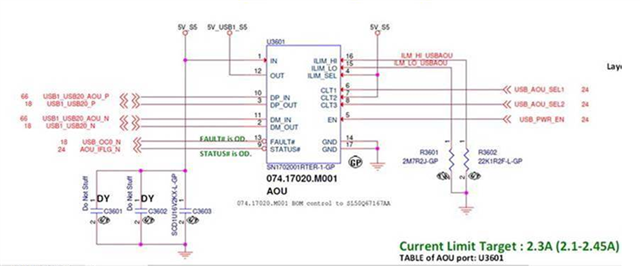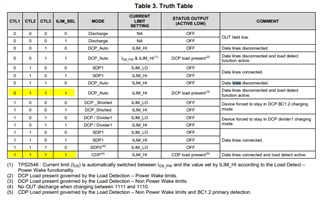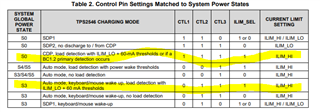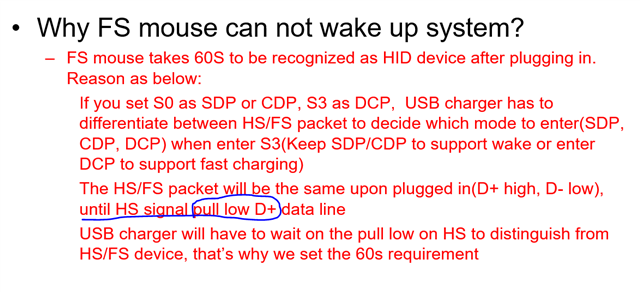Hi team,
my customer plug in the mouse , and he have to wait 60s so it can wake it up in sleep mode (S3).
I know that's how our device works, and means the mouse probably the full-speed device.
but the strange things is they try it on the last platform which has same design same TPS2546 but with different CPU, the mouse doesn't have to wait 60s to wake up from sleep.
that's really strange..
any idea what this difference come from?










